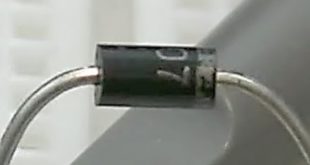If you are like me and have a spare PC fan laying around Then it is always a good idea to glue a neodymium Magnet to each one of its blades and use a more powerful magnet to repel them So that the fan spins forever and thus produces an unlimited amount of free energy Sounds too good to be true, right? Well in this video let’s play around with this infamous magnet PC fan and the so called Bedini motor to find out how much free energy we can actually produce Let’s get started First off this set up for this magnet PC fan is fake the light bulb is actually powered by one channel of my lab bench power supply while the other channel provides a voltage of 2.7V for the fan So that it can slowly spin without raising too much suspicion Since it is impossible to accelerate the fan solely through the magnetic repulsion because the magnetic attraction occurs a fraction of a second later and basically counteracts the rotation But not only that if we solder a red LED to three different PC fans and Spin them We can see that two LEDs stay completely dark and only one lights up decently here for a very short amount of time The reason is the driver circuit of the fans which are all slightly different But were all never intended to be used as a generator circuits That is why the first fan basically outputs nothing the second one outputs 1/2 wave of a sine wave with a peak voltage of 1.5V And the third One outputs two rectified halves of a sine wave with the peak voltage of 2V And even if we use the fan with the highest output power the LEDs light intensity would only equal a power of around 0.01W Definitely not enough to power a 21W light bulb. So all in all the magnet PC fan is bullshit Next is the Bedini motor whose circuit schematic looks most of the time something like this As a power source it usually features a 12V battery that through the magic of the circuit adds free energy and thus either charges up a second battery or lights up neon bulbs Now all of the mandatory component for it are pretty common, and thus not a problem together Except the two coils which represent the motor stator section of the circuit For that, I firstly had to remove the label of a PC fan in order to remove the circlip that holds the rotor in place After removing it as well I unsolder the four wires from the circuits and pulled off this stator with driver circuit out of the case then I heated up the connector pins of the stator to remove the driver circuits and continued by unsoldering the two coil wires from two connector pins What we want in the end are the four wires sticking out from the stator to which we have to solder four extension wires Which we can then secure in place with hot glue and then redirect out of the PC fan case While the stator gets positioned in its old place Now by measuring the resistance between the four wires we should get two pairs with the resistance of about 21O Which represent the two coil pairs After marking one of them it was time to create the circuits. Which due to its simplicity here only took around 5 minutes As a power source I use my lab bench power supply Set to 12V and as the to be charged as battery I used the super capacitor only problem was that the circuit didn’t want to start on its own A small Spin for the pan was necessary to get it going and as you can see the capacitor did get charged up While the circuits do around 2W on the input so to calculate the efficiency here I stopped the circuit, discharged the capacitor installed it again while also starting a stopwatch after around 8 minutes the capacitor reached the voltage of 1V With its capacity of 22F this equals an output energy of 11Ws For the input energy here We simply have to multiply the input power of around 2W with the time the charging required which equals an enegy of 956Ws so the circuit does feature a overall efficiency of 1.15% keep in mind that when dealing with free energy here we strive for an efficiency of above 100% and this is 1% but for last test let’s unsolder the capacitor and instead let’s add a neon bulb to the output of the circuits as you can see here the bulb lights up brighter on the outputs than it does on the input Which means there has to be free energy involved is what people would argue now, but that is also bullshit The reason for this can be found when we analyze the circuits First off we spin the router so that a positive voltage is induced into the base side coil Which then pushes current through the base of the transistor This opens the collector middle path and thus current can flow through the other coil Which therefore builds up of Magnetic fields and keeps moving the rotor Due to this an negative voltage is induced into the other coil and thus a negative voltage is applied to the base Which closes the Collector emitter path Here it gets interesting. The stored energy of the coil in its magnetic fields gets pushed into the neon bulb Which results in a small voltage spike, and thus a brief moment in which it lights up Afterwards though the base side coil gets once again induced with a positive voltage and the cycle repeats all over again So all in all this is simply a crude boost converter that definitely not uses such a thing as free Energy I mean from a logical side of view you supply input power have thousands of resistances voltage drops and power losses in your circuits and still expect more power on the output then on the input that makes no sense, but I will give the circuit this. It is a pretty decent fan driver Anyway, I hope you enjoyed watching this video. If so don’t forget to like share and subscribe Stay creative and I will see you next time
Check Also
Diode Tutorial & How to build an AC to DC power supply
In this tutorial, I’m going to cover silicon diodes, bridge rectifiers, and how you convert …








